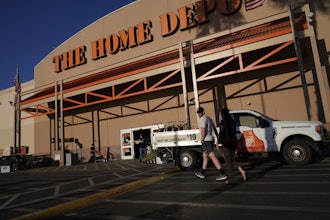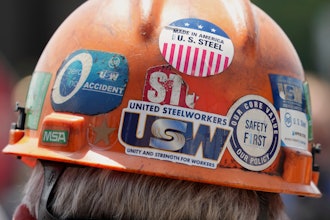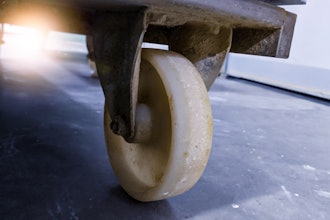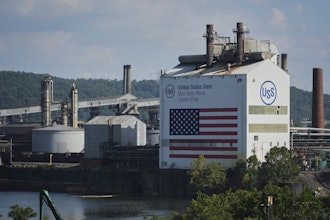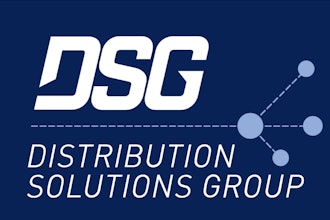
In my first article, I described efforts by unions and third parties to attack and embarrass distribution employers. This article will discuss the U.S. Department of Labor and other federal and state government agencies’ focus on supply chain management and distribution. The Administration, unions, and many academics do not like the methods by which manufacturers manage their supply chain or the way in which distributors handle the product. They distrust the shift of non-core functions from large, often unionized, vertically integrated manufacturers to specialized companies.
The theory is that the contractors are under such competitive pressure that they will ignore OSHA requirements and will fail to pay for all hours worked or for overtime premiums. The assumption is that part of the reason manufacturers hand off certain functions is to escape liability for wage and safety violations. Moreover, critics believe that temporary and other non-traditional employees receive inadequate supervision and safety training. As I typed this article, I saw a legal alert that summed up the attitude of the government:
“California lawmakers are swiftly pushing forward a bill designed to curb the practice of employers hiding behind staffing agencies to shield themselves from workers compensation and wage violations…”
Or how about this explanation from OSHA’s head, David Michaels, for OSHA’s focus on temporary employees and employers who use them:
“Host employers need to treat temporary workers as they treat existing employees. Temporary employers share control over the employee and are therefore jointly responsible for temp employees’ safety…”
Managing Temporary, Lumpers, Contractors, and Other Non-Routine Employees
Many distributors use temporary workers or logistics companies to manage seasonal and other workforce fluctuations. OSHA is concerned, not without reason, that temps may not receive the same supervision and training as full time employees. Similarly, many employers use temps in the warehouse setting as temp-to-perm, which is basically an audition period for full-time employment. So here are a few tips:
- The employer supervising the temp employee records an injury on the OSHA 30 even if an agency handles the worker’s compensation claims.
- Safety hazards are the same for a temp and a full-time employee performing the same duties, so they should receive exactly the same training and PPE, as well as participate in the same safety meetings and in all ways be held to the same safety standards.
- Many temps work for months and years at a time with the same employer and must be included in any respiratory protection or hearing conservation programs (such as for certain work areas around conveyors).
- Speaking of those temps who may work for you for longer periods than some full-time employees, you should audit your workforce because (a) you may not know how many such workers you use, and (b) may realize just how long they have been with you.
- You may not have a clear grasp of the role of non-routine employees and may not be using them effectively.
- If you use lumper or other logistics providers on site, you still retain some degree of what OSHA calls controlling employer responsibility to monitor or take some steps to require your on site provider to comply with OSHA standards. Often the provider has supervision on site and you do not want to interfere with themeans and methods of how they do their job. Nevertheless, you should take steps to ensure that the provider has effective safety procedures in place during your prequalification of the provider. Require that the provider document site-specific “Job Safety Analysis” (JSAs) that they have prepared for each job requiring PPE. Ask for documentation of training. Do not take on responsibility to review their training materials and programs, but do make them document their efforts. The provider may be a separate employer with its own supervisors, but if their employees are hurt or if they are cited for OSHA violations, the odds are that in some fashion you will be drawn into the fray.
Wage and Discrimination Issues
The tests for joint employer vary according to the state or federal law, and in most cases you want to avoid joint employer status for contractor employees working where they are supervised by the provider. But don’t assume that your efforts are adequate. As set out in the new Fed Wage-Hour Director‘s book, The Fissured Workplace: Why Work Became Back So Bad For So Many And What Can Be Done To Improve It, government agencies are straining to hold the large companies using contractors responsible for wage and other violations by their contractors.
Workers engaging in harassment or creating a hostile work environmentdo not distinguish between temporary and full-time employees and limit their bad behavior to one group. Your temp employees may not be as aware of your anti-discrimination policies or complaint procedures as longer term employees. They may seek assistance from the EEOC or a plaintiff lawyer rather than using your open door policy. The modern worker’s sensitivity to bullying is behind many same-sax and other harassment claims. Employees do not tolerate the same level of horseplay and rough teasing that those of us in our 50s endured. When you see a claim that a male coworker photographed and shared photos of another worker in a shower or hung a noose “as a joke” in a work area, that outrageous conduct did not occur overnight. There was a gradual loss of professionalism in the workplace.
Bullying, Professionalism, And The NLRB
Many employers are issuing “No Bullying” policies and/or training supervisors to address unprofessional workplace behavior before it rises to a legal claim. Many companies have issued civility or code of conduct policies. However, the NLRB has quite literally declared war on any policy which the board believes in any way might discourage employees from exercising their rights to organize or discuss wages, benefits and terms and conditions of employment. Although the board itself has acknowledged that union organizing and disputes are not synonymous with cursing and uncooperative or abusive behavior, they strike down most policies they review.
Howard Mavity is a partner in the Atlanta office of Fisher & Phillips LLP and co-chairs the firm's Workplace Safety and Catastrophe Management Practice Group. He draws upon his past business experience in transportation, logistics, construction, and industrial supply to work with clients as a business partner, and focuses on eliminating employee problems by commonsense management. Mavity has provided counsel for more than 225 occasions of union activity, guided unionized companies and has managed some 500 OSHA fatality cases in construction and general industry, varying from dust explosions to building collapses, in virtually every state. For more information, please visit https://www.fisherphillips.com/en/index.html.









